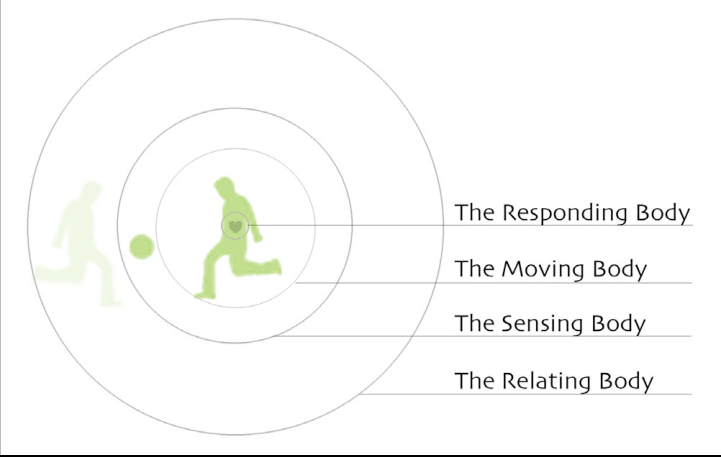In this section, I discuss one of the most common uses of sensing hardware, to understand humans and their activities.
Sensors can be used to understand a wide range of aspects of human activity. I break them down here using a framework from Mueller et al. 2011.

Figure 1 shows four aspects of human behaviour which Mueller et al. describe. Understanding each of these aspects of behaviour may require different types and approaches to sensing. In the following sections I will describe sensing technology relating to the aspects, which are:
1) The responding body - sensing of how our body responds internally to stimuli. For example our heart rate and breathing may be affected by activity or by other factors such as fear.
2) The moving body how we sense the motion and posture of the body itself, for example detecting running motion.
3) The sensing body - many human activities involve us interacting with things in the external world such as devices, interfaces or other equipment.
4) The relating body - humans are social creatures - this section describes sensing of moments when humans interact together.
References
- Mueller, F.F., Edge, D., Vetere, F., Gibbs, M.R., Agamanolis, S., Bongers, B. and Sheridan, J.G., 2011, May. Designing sports: a framework for exertion games. In Proceedings of the sigchi conference on human factors in computing systems (pp. 2651-2660) .